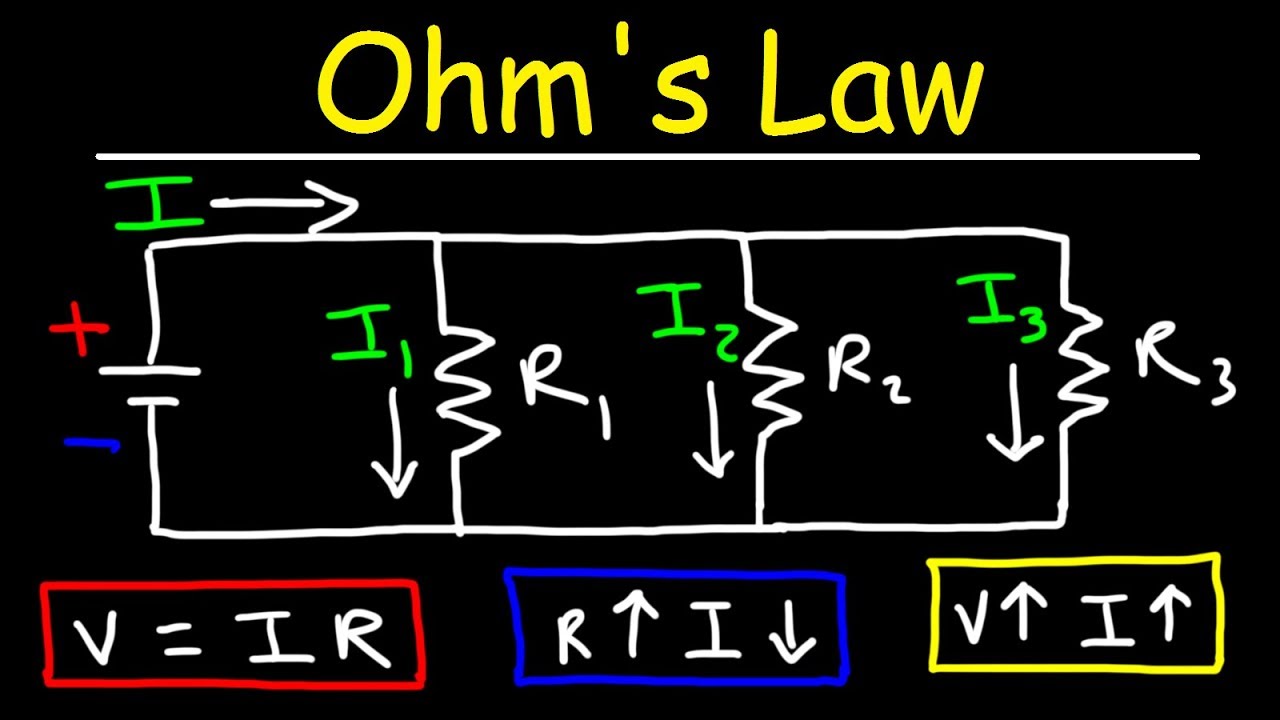
Ohm's Law is a fundamental principle in physics and electrical engineering. It states that the current flowing through a conductor between two points is directly proportional to the voltage across the two points. This relationship is expressed with the formula V = IR, where V stands for voltage, I for current, and R for resistance. Understanding Ohm's Law is crucial for anyone working with electrical circuits, as it helps predict how circuits will behave under different conditions. Whether you're a student, hobbyist, or professional, grasping this concept can make troubleshooting and designing circuits much easier. Ready to dive into some fascinating facts about Ohm's Law? Let's get started!
The Life of Georg Simon Ohm
Georg Simon Ohm, a German physicist and mathematician, made significant contributions to the field of electricity. His work laid the foundation for understanding electrical circuits.
- Born on March 16, 1789, in Erlangen, Bavaria, Ohm was the son of a locksmith.
- Despite his humble beginnings, Ohm's father educated him and his siblings at home, focusing on mathematics and science.
- Ohm attended the University of Erlangen but left due to financial difficulties, later becoming a mathematics teacher.
- In 1827, Ohm published his famous book, "Die galvanische Kette, mathematisch bearbeitet," where he formulated Ohm's Law.
- Ohm's Law states that the current through a conductor between two points is directly proportional to the voltage across the two points, provided the temperature remains constant.
Ohm's Law and Its Impact
Ohm's Law is a fundamental principle in electrical engineering and physics. It helps in understanding how electrical circuits function.
- Ohm's Law is mathematically expressed as V = IR, where V is voltage, I is current, and R is resistance.
- This law simplifies the analysis of electrical circuits, making it easier to design and troubleshoot them.
- Ohm's work was initially met with skepticism, but it eventually gained recognition and became a cornerstone of electrical theory.
- The unit of electrical resistance, the ohm (Ω), is named in his honor.
- Ohm's Law is crucial for calculating the power consumption of electrical devices, which is given by P = VI.
Contributions Beyond Ohm's Law
Ohm's contributions to science extend beyond his famous law. He made several other important discoveries and advancements.
- Ohm discovered the relationship between the length of a wire and its resistance, showing that resistance increases with length.
- He also found that resistance decreases with an increase in the cross-sectional area of the wire.
- Ohm's work on the thermal conductivity of metals contributed to the understanding of heat transfer in materials.
- He developed a theory on the conduction of heat in solids, which influenced later research in thermodynamics.
- Ohm's research on acoustics led to the formulation of Ohm's Acoustic Law, which states that the human ear perceives sound based on the frequency of the sound waves.
Recognition and Legacy
Despite facing initial resistance, Ohm's work eventually received the recognition it deserved. His legacy continues to influence modern science and engineering.
- In 1841, Ohm was awarded the Copley Medal by the Royal Society of London for his contributions to electrical science.
- He became a professor of experimental physics at the University of Munich in 1849.
- Ohm's work laid the groundwork for future scientists like James Clerk Maxwell, who expanded on his theories.
- The ohm, as a unit of resistance, is universally used in electrical engineering and physics.
- Ohm's contributions are celebrated in various scientific communities, with numerous awards and honors named after him.
Fun Facts About Ohm
Ohm's life and work are filled with interesting tidbits that highlight his dedication and passion for science.
- Ohm was a self-taught violinist and often played music to relax after a day of scientific research.
- He was known for his meticulous nature, often spending hours perfecting his experiments and calculations.
- Despite his significant contributions, Ohm lived a modest life and never amassed great wealth.
- Ohm's work was initially published in obscure journals, making it difficult for his contemporaries to access and understand his findings.
- Today, Ohm is remembered as a pioneer in electrical science, with his name immortalized in the unit of resistance and numerous scientific principles.
The Final Word on Ohm's Law
Ohm's Law is more than just a formula; it's a cornerstone of electrical engineering and physics. Understanding voltage, current, and resistance helps us grasp how electrical circuits work. This knowledge is crucial for designing everything from household gadgets to complex industrial systems.
Whether you're a student, hobbyist, or professional, mastering Ohm's Law can open doors to deeper insights into electronics. It simplifies troubleshooting, aids in designing circuits, and ensures safety in electrical applications.
So next time you flip a switch or charge your phone, remember the simple yet powerful principles of Ohm's Law at work. Keep exploring, keep experimenting, and let the wonders of electricity continue to spark your curiosity.
Was this page helpful?
Our commitment to delivering trustworthy and engaging content is at the heart of what we do. Each fact on our site is contributed by real users like you, bringing a wealth of diverse insights and information. To ensure the highest standards of accuracy and reliability, our dedicated editors meticulously review each submission. This process guarantees that the facts we share are not only fascinating but also credible. Trust in our commitment to quality and authenticity as you explore and learn with us.
